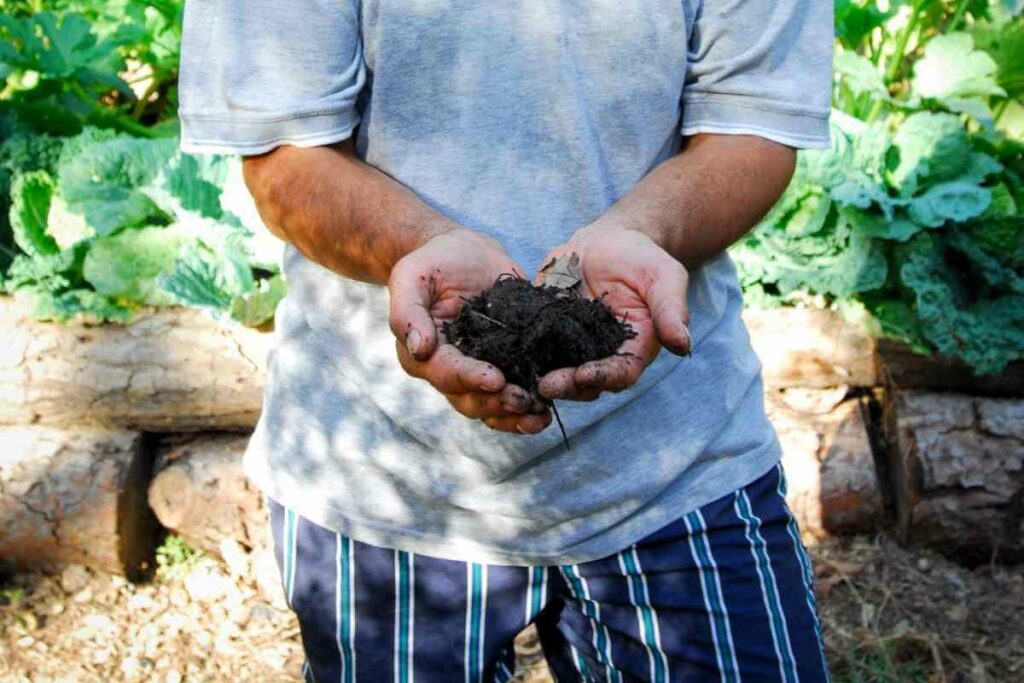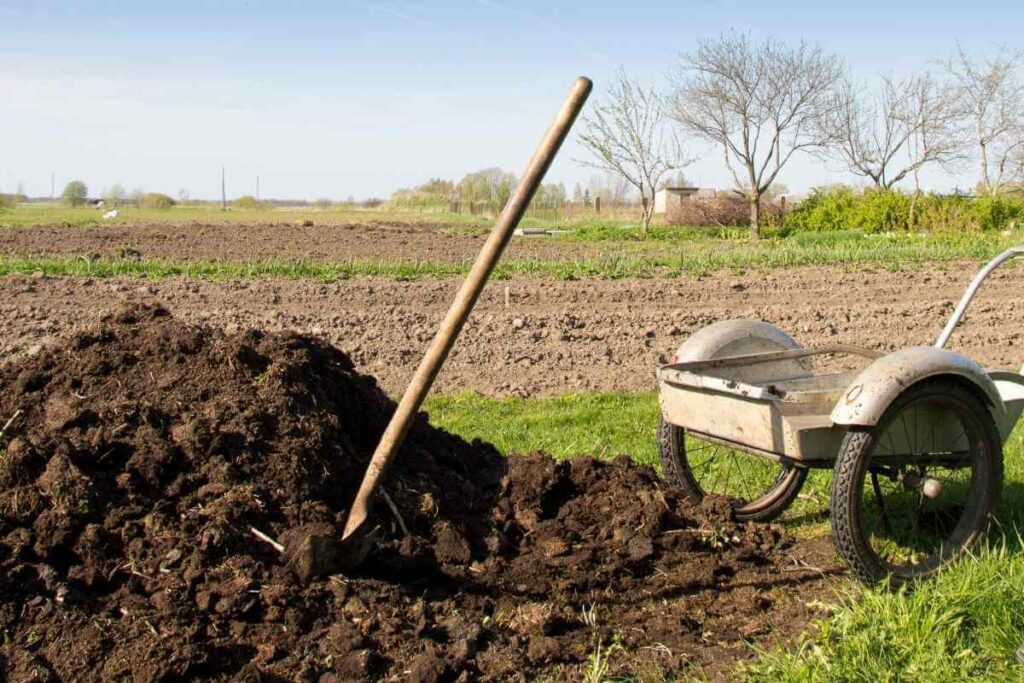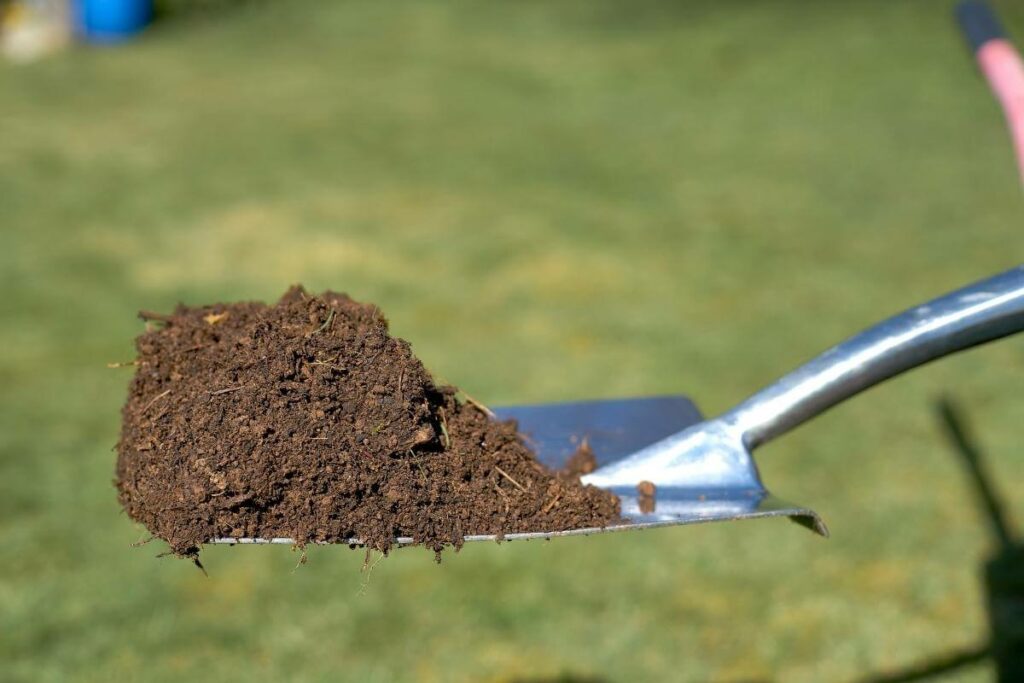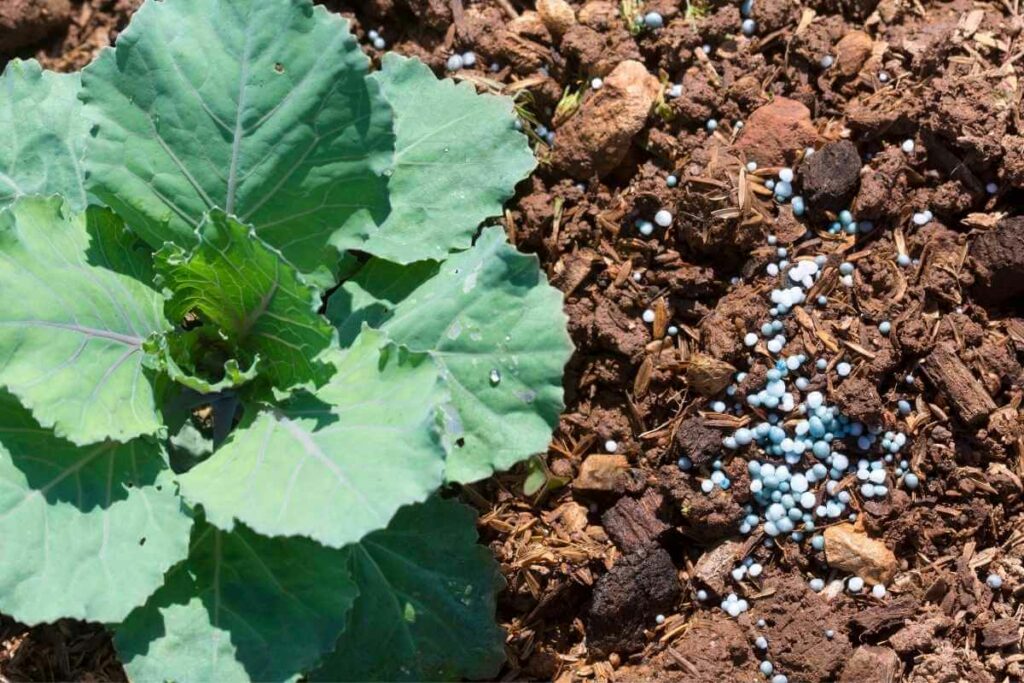The aim of growing using organic fertilizers is to create healthy soil with nutrients, aeration, biological activity, and decreasing erosion.
Organic fertilizers are preferred over chemically produced fertilizers because they are much better for the health of the garden, lawn, and environment.
Considering all the benefits offered by these fertilizers can they actually kill the grass or plants?
Crop burn from organic fertilizers is less likely to occur when compared to chemical applications because organic fertilizers dissolve and release more slowly than chemical fertilizers. However, organic fertilizers can also burn the lawn or garden just as quickly as chemical fertilizers, especially on delicate crops, if not used properly.
Excess organic fertilizer application will impair a plant’s ability to process the nutrients it receives.

Fertilizer salts are formed when fertilizers accumulate and drain water away from plant roots and tissues.
Because plants cannot absorb the necessary water, their leaves begin to turn yellow or brown and eventually die.
How To Use Organic Fertilizers Properly To Prevent Fertilizer Burn?
Organic fertilizers are suitable for gardens and lawns, but fertilizer diets must be attentively monitored just like human diets.
Some gardeners frequently misuse organic fertilizers, which can have disastrous consequences.
1. Don’t Apply Too Much Fertilizer
A key point that every gardener should keep in mind is that more does not always mean better especially when it comes to fertilizers or other lawn and garden products. Overfeeding your plants with organic fertilizers beyond the plant’s needs will result in rapid plant burn and impact the environment.
The most important management practice to avoid overfeeding your plants or lawn is to create a nutrient management strategy based on annual soil tests and realistic crop yield targets.
Annual soil tests will reveal your soil’s nutrient content.
Then, subtract the nutrients already available in the soil from the crop’s total nutrient requirement to determine how much fertilizer your crop requires.
Fertilize each plant based on its needs once you’ve determined how much additional N, P, and K you need to apply.
More fertilizer will not produce better results, and you risk damaging or killing your plants or lawn.
The amount of organic fertilizer you spread around also depends on its strength; refer to the package instructions for the suggested fertilizer application rates.

If there is no recommended application rate for bed preparation in a garden or lawn, then you can try 2.3 kg per ten square meters (5 lb. per 100 square feet).
That much fertilizer would be enough for a garden bed one meter wide and just over nine meters long (forty feet in wide and thirty feet long).
2. Timing Is Everything
Fertilize only when necessary. It’s easy to assume that all plants require occasional feeding, but now that you know you can overdo it, you should make sure your soil requires it in the first place.
Some experts recommend fertilizer applications every three to four weeks for plants growing in organic soil rich in organic matter.
In terms of frequency:
- It is preferable to fertilize in small doses at regular intervals rather than large doses all at once.
- Use only half to a quarter of the amount recommended on the fertilizer package. It is always preferable to use too little rather than too much.
Before applying the fertilizer, do some research on the plants that will be fertilized.
Different plants necessitate different formulations and may be sensitive to specific formulations.
3. Follow Instructions
Are you adhering to the instructions?
Obviously, this mainly refers to commercial organic fertilizers.

Most cases of fertilizer burn can be avoided simply by reading the label on your fertilizer products and following all of the instructions on the label.
Labels on reputable products will include recommended application rates, methods, and conditions to avoid lawn and plant damage.
Don’t Forget: You will most likely need to dilute your product before applying it, and the instructions may state that you should water your plants again after fertilizing. If you ignore these details, you may run into problems.
4. Don’t Use Fresh Homemade Organic Fertilizer
You are not permitted to feed fresh manure to your plants.
It contains an excessive amount of nitrogen and is a common cause of fertilizer burn.
Because nitrogen degrades naturally over time, manure should be aged for at least three months before application.
5. Do Not Use Organic Fertilizer That Contains Too Much Nitrogen
The best way to deal with fertilizer burn is to be aware of how much nitrogen is present in your product options.
Any nutrient can cause fertilizer burn, but nitrogen is the most likely culprit.
This is especially true if you mix your natural fertilizers at home without knowing the label’s detailed ingredient lists or ratios.
It can be beneficial to know which fertilizers contain nitrogen in the first place so that you don’t overdo it. This is because it is very easy to use two or three natural materials.
After all, they each provide something to the soil (such as potassium or calcium) and do not realize that they are also providing a big dose of nitrogen at the same time.

Cottonseed meal, alfalfa meal, manure, blood meal, and seaweed emulsions are examples of natural materials.
As a result, if you combine two or more of these in your fertilizing regimen, you may be overdoing the nitrogen without realizing it.
What you buy will be determined by what is sold in garden stores in your area.
NPK
The N-P-K ratings greatly vary in different areas, but generally, always look for one that has a fairly balanced (N = P = K), such as the 4-6-4 of all-purpose organic fertilizer.
If there are fertilizers with numbers that may add up to more than fifteen, or if any of the numbers in the ratio is greater than eight, then they are most likely NOT organic fertilizers, even if they are labeled as such, and should be avoided.
Using a fertilizer with too much nitrogen will interfere with a plant’s cellular respiration, resulting in fertilizer burn.
From Experience: To determine the amount of Nitrogen that is in the bag of fertilizer, you can multiply the weight of the fertilizer bag by the Nitrogen percentage (this is the first number in the N-P-K designation on the front of the bag). This will help you know how many pounds of Nitrogen are present in the bag.
6. Use Slow-Release Fertilizer
Organic fertilizers frequently mean that the fertilizer was naturally produced from natural substances such as animals, plants, and minerals rather than being produced in a lab.

However, the national standards for the production of commercial organic fertilizers are complicated, allowing for the sale of organic fertilizers that do not contain only natural, safe materials for your garden.
According to Organic Gardening, unless you buy from a trusted source or you make your own bone meal, compost, or manure from organically raised animals, you can’t be sure that commercial fertilizers that are labeled organic are really organic.
Look for the ones with words like natural organic, low analysis, or slow-release when shopping for commercially made organic fertilizers.
If you can’t find them, choose products with an NPK analysis that is less than 15.
Slow-release fertilizer reduces the likelihood of fertilizer burn in plants by slowly releasing the salts into the soil rather than all at once.
7. Uneven Fertilizer Application
To ensure that your lawn or garden grows well, apply fertilizer evenly and carefully across the surface of the soil.
Bat guano, a popular natural fertilizer, is extremely hot and can quickly burn plants if not used properly.
If the product is not applied evenly, you will notice brown patches on your plants and dry grass in certain areas of your lawn.
A good application technique will assist you in maintaining and ensuring the health of your lawn.
Organic fertilizers can be applied in different ways to prevent burn:
Broadcast Before Planting
Spread fertilizer on the bed’s surface before digging into the soil when preparing it for planting. When making rows, the appropriate amount of fertilizer is spread evenly over the garden and mixed with the soil to a depth of three to four inches.
This method is the least likely to result in plant burn and is usually recommended for home gardeners.

Band or Row Applications: Before planting, a strip of fertilizer is applied to the side of the row. You must be careful not to let the roots contact the fertilizer band, as this can kill the plants.
Final Thoughts
Fertilizer burn can occur with both organic and synthetic fertilizers, but organic fertilizers are less likely to cause it.
Organic fertilizers are safe for plants, grass, and the environment when used correctly.
Because the process by which plants absorb nutrients is the same whether they come from organic or inorganic fertilizer, it doesn’t matter which type of fertilizer you use.
This may cause a gardener to wonder if using organic products is really necessary.
After all, what works right now and makes the garden look nice is all that matters, right?
In a word, yes and no.
Organic gardening is concerned with the overall health of the plants/grass and soil, so while synthetic fertilizers may work well today, organic fertilizers will always be superior because they ensure the garden’s health tomorrow.


